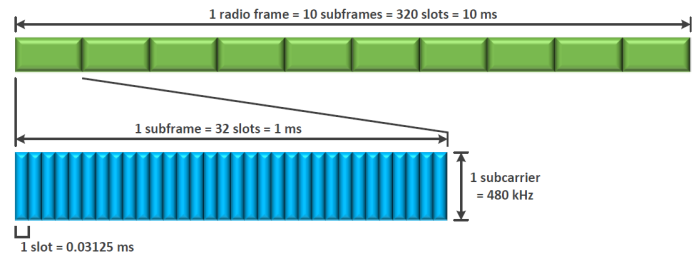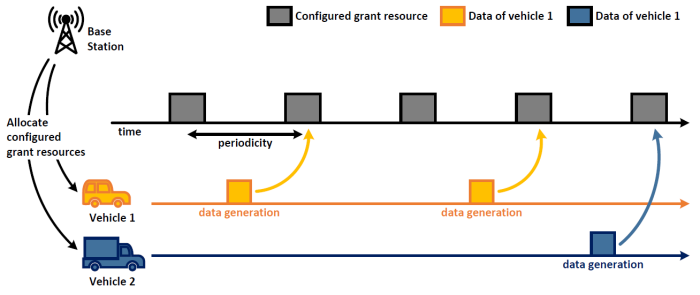How 5G reduces data transmission latency
Release Time:2020-03-21 Reads:4373
One of the essential requirements in 5G wireless systems is minimizing packet transmission latency for ultra-reliable and low latency (URLLC) services. One of the most prominent examples will be vehicle-to-everything (V2X) communications. V2X certainly includes reaching vehicles with broadband services, but latency isn’t an issue there. Low latency in cellular networks is a prerequisite for making autonomous vehicles safe.
Autonomous vehicles will have to sense other vehicles, road conditions, pedestrians, and other obstacles. Often there will be environmental sensors to supplement this information; that data will frequently be available to autonomous vehicles via road side units (RSU) or other vehicles. Low-latency connections among these RSUs, the V2X application servers, and vehicle-based systems will lead to faster decision-making, which will lead to improved safety.
As an example, consider stopping distances. When a person operating a vehicle on a highway moving at 70 mph recognizes a danger, the traditional stopping distance is 96 meters, or 315 feet (Figure 1). Twenty-one meters of the total 96m is a thinking distance, based on a reaction time of 0.67s, the remaining 75m is actual braking distance. But with autonomous driving engaged, vehicles would recognize the dangerous situation earlier, the thinking distance would be reduced, and there would be more space for braking. The result will be a significant decrease in collision rates.

Figure 1 Typical stopping distances. Source: UK Department for Transport
The V2X system assists vehicles to rapidly recognize the danger by alerting vehicles in vicinity of the hazardous situation, and the 1 millisecond (ms) end-to-end transmission latency requirement of 5G minimizes the reaction time of autonomous driving cars.
The existing LTE (long-term evolution – a 4G technology) system has a couple of fundamental limitations preventing it from supporting 1ms latency. The first obstacle is that the minimum size of a radio transport block is a subframe having 1ms length. This means a duration of 1ms is spent solely for transmitting the transport block via air interface, excluding processing time at devices and transmission latency in network.
To reduce response time, 5G uses a scalable orthogonal frequency-division multiplexing (OFDM) framework with different numerologies. Within a 1ms time duration, six separate slot configurations are available, e.g. 1, 2, 4, 8, 16, and 32 slots. The minimum size of a transport block could be reduced to a minimum of 0.03125ms based on the new configuration as shown in Figure 2.

Figure 2 Example slot configuration of multiple types of numerologies (TTIs). Source: 3GPP
Another characteristic of LTE that makes it difficult to reduce latency is the radio resource allocation delay between a vehicle and base station. When a vehicle wants to transmit packets, a radio resource grant procedure precedes the packet transmission. To transmit a resource scheduling request and send packets on the scheduled resource, a vehicle needs at least 8ms. In LTE, the semi-persistent scheduling (SPS) feature was introduced for periodic data transmissions like voice over IP (VoIP) services.
When a base station configures SPS radio resources, a mobile handset can employ the periodic resources, without an additional scheduling request procedure. When the device gets data to send in its buffer, it can transmit the data via the next periodic resource already configured.
However, the existing LTE SPS configuration is dedicated to a single device. If the device does not need periodic resources, for example transmitting data only when specific events occur, such as a collision warning, the SPS resources unemployed by the device are wasted.
To reduce the waste of periodically allocated resources, 5G enables multiple devices to share the periodic resources, called a configured grant (Type 1). The configured grant is based on the LTE SPS feature. In Figure 3, the base station allocates the configured grant resources to multiple vehicles, and the vehicles randomly utilize the resources when they have data to transmit. By assigning the configured grant resources, the 5G network eliminates the packet transmission delay for a scheduling request procedure and increases the utilization ratio of allocated periodic radio resources.

Figure 3 Configured grant resources
Ofinno has developed a number of patented technologies regarding SPS and configured grant technologies. The technologies of the patents improve operation efficiency of the configured grant by proposing multiple SPS configurations, enhanced mobility mechanisms, carrier aggregation for V2X services, device capability information sharing, and power control methods. The multiple SPS configurations provide efficient resource utilization and reduce transmission latency with optimized resource configurations (e.g. periodicity and resource size) for different types of services. The enhanced mobility mechanisms enable reliable packet transmission during a handover procedure of V2X devices. The carrier aggregation for V2X services boosts up radio resource capacity with introduction of multiple cell cooperation for reliable V2X services.
V2X and enabling technologies are discussed in greater length in this white paper from Ofinno: Traffic Control and Vehicle-to-Everything (V2X) Communications.
Kyungmin Park is a senior researcher at Ofinno Technologies focusing on radio access network procedures for LTE Advanced, LTE Advanced Pro, and New Radio for 5G.